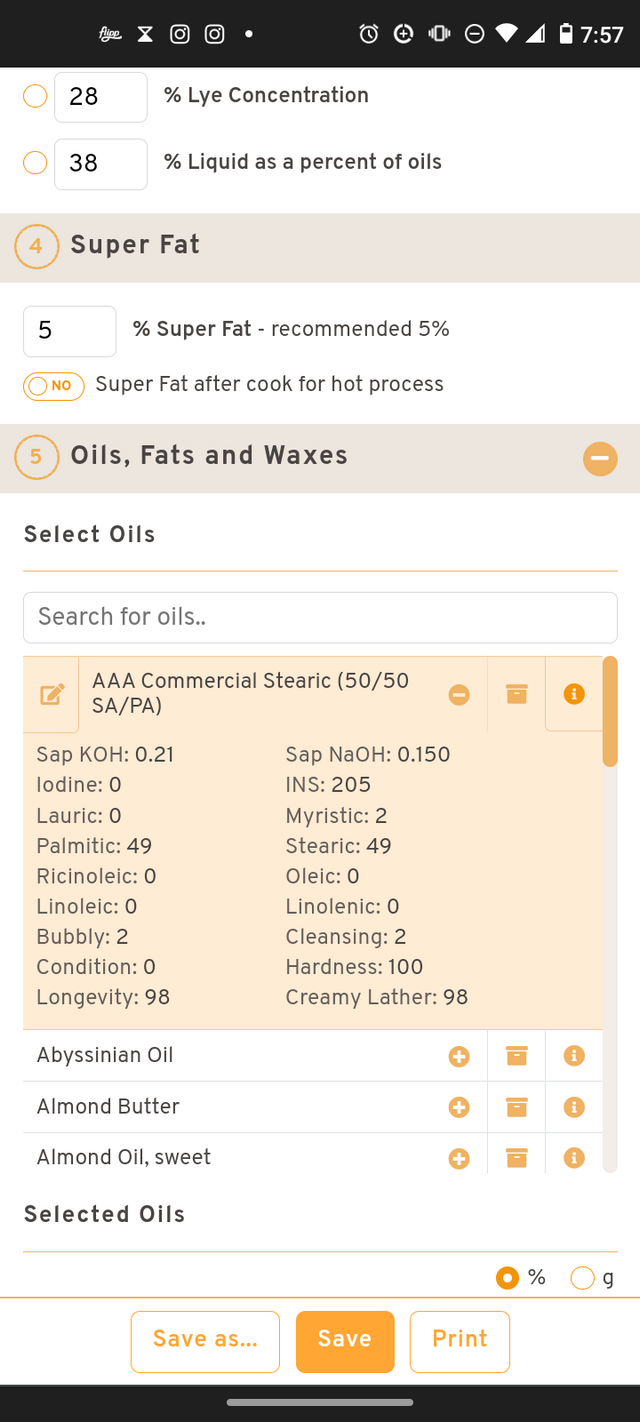I’ve looked at a lot of shave soap recipes, but none that are: cold-process, palm-free, and tallow/lard-free. I found a source of stearic acid that is soy based, so I want to give shaving soap a shot. Because this would be my first shaving soap - and, more importantly, my first hybrid lye soap - I don’t feel confident in my recipe, but I can’t use any of the recipes I’ve found so far because of the palm/animal fats issue.
Does anyone have tips for making a vegan and palm-free shaving soap (CP)? Here is a recipe I’ve been playing with, using ingredients I already have. I’ve read other posts on here and adjusted my recipe to have more water and more stearic acid.
Shea butter 35%
Stearic acid (soy-based) 35%
Coconut oil 18%
Sunflower oil 8%
Castor oil 4%
40% NaOH
60% KOH
3.5 : 1 water to lye ratio (should I go with more water?)
5% superfat (hopefully this is enough to counter the low conditioning number)
Also, if it’s useful, I’m hoping to use 3” round silicone individual cavity molds. (I also have 3 1/16” round tins I could use instead if the recipe turns out too soft.)
One day I’d love to reformulate this without coconut oil (since it’s highly comedogenic), but I’m trying to take baby steps. Any thoughts or advice is greatly appreciated!
Does anyone have tips for making a vegan and palm-free shaving soap (CP)? Here is a recipe I’ve been playing with, using ingredients I already have. I’ve read other posts on here and adjusted my recipe to have more water and more stearic acid.
Shea butter 35%
Stearic acid (soy-based) 35%
Coconut oil 18%
Sunflower oil 8%
Castor oil 4%
40% NaOH
60% KOH
3.5 : 1 water to lye ratio (should I go with more water?)
5% superfat (hopefully this is enough to counter the low conditioning number)
Also, if it’s useful, I’m hoping to use 3” round silicone individual cavity molds. (I also have 3 1/16” round tins I could use instead if the recipe turns out too soft.)
One day I’d love to reformulate this without coconut oil (since it’s highly comedogenic), but I’m trying to take baby steps. Any thoughts or advice is greatly appreciated!























































